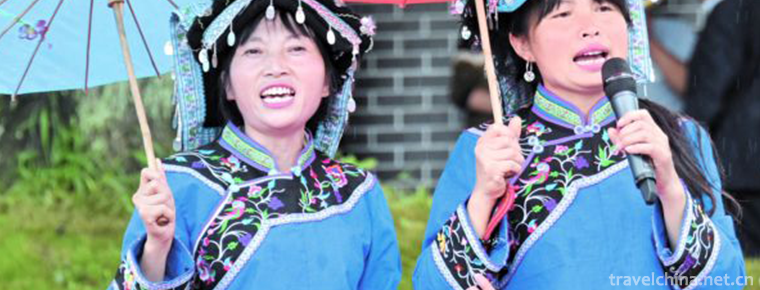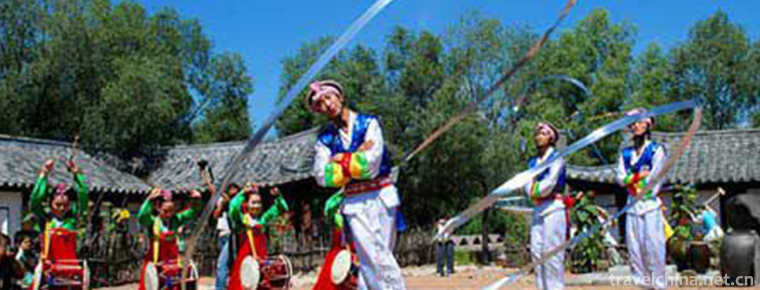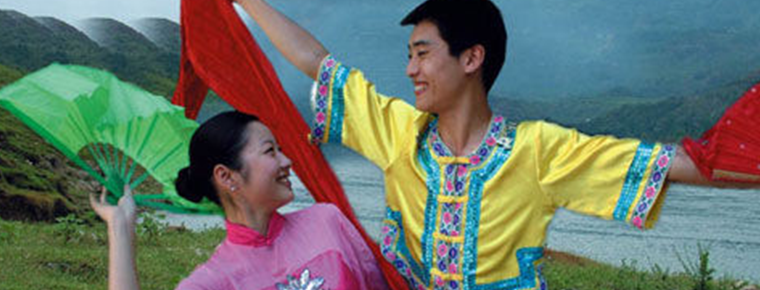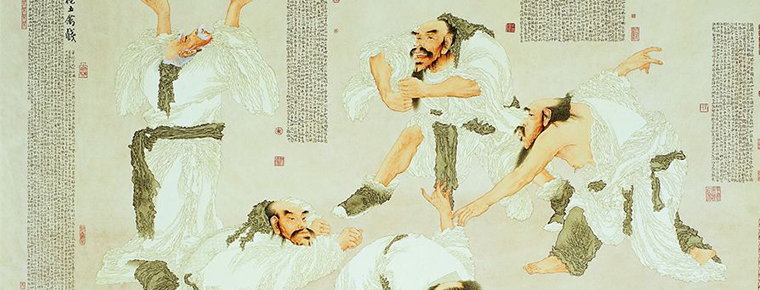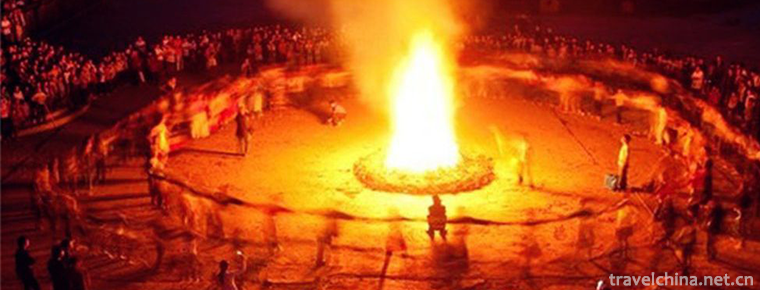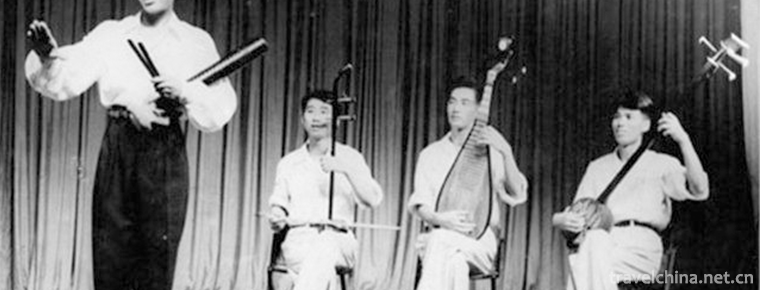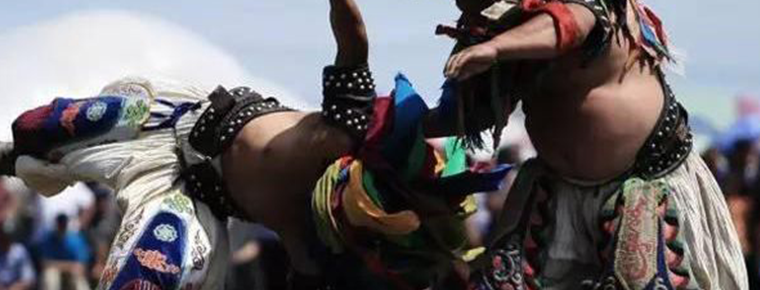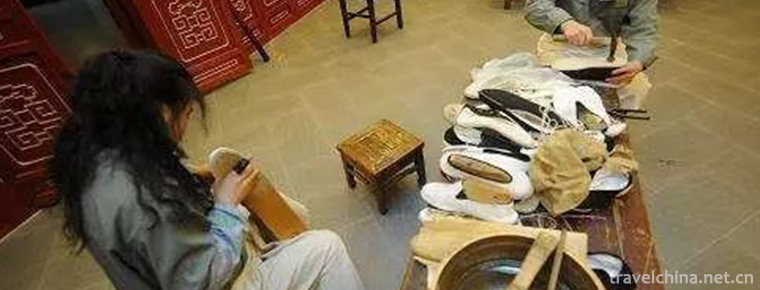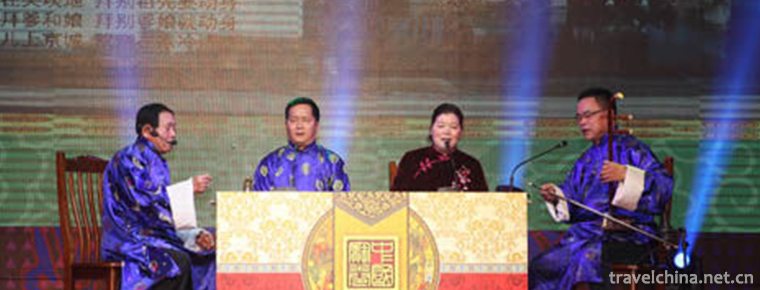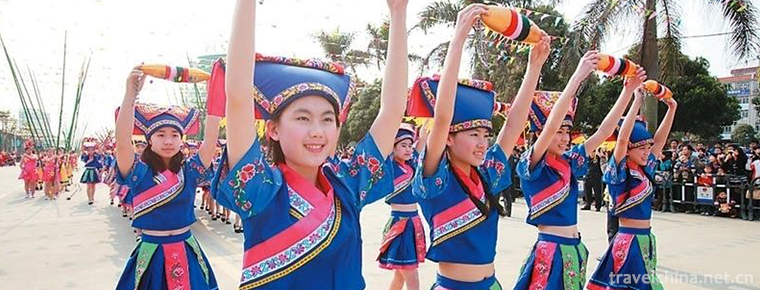Sugar plastic
Sugar plastic
Sugar sculpture, one of the traditional folk handicraft products, commonly known as sugar blowing, sugar manikin, engaged in this trade called sugar blowing people, throughout the country, especially in Tianmen, Hubei, Wuyang (now Xiantao City). Sugar sculpture is made of maltose as raw material, which is heated to soften the sugar and mixed with red, blue and black pigments. Dozens of different colors can be adjusted according to the need. Then, with the aid of tools such as scissors, combs, basket knives and auxiliary materials such as bamboo slices, springs and gypsum powder, it is shaped by artists'blowing, pulling, rubbing, pulling, kneading, pressing and scissors.
The unique feature of Tianmen Yuyang Sugar Sculpture is that it is superior in production. It is a kind of traditional handicraft, such as fish, Erlong Opera Pearl, Kirin Giving Seeds, Mu Guiying hanging in command, Yang Zongbao ordering troops and so on. On June 7, 2008, sugar sculpture was approved by the State Council to be included in the second batch of national intangible cultural heritage list.
Historical Origin
Sugar art in Chu area was bred in the custom of sacrificing ancestors and spirits with sacrificed sugar products by Chu people. It was also closely related to the exchange of small handicraft in the Yangtze River valley. Sugar sculpture artists in Chudi worship Zhejiang native Liu Bowen as their grandfather (until now, sugar sculpture artists every year on August 10 of the lunar calendar)
Five reunions to visit "Master Liu". The introduction of sugar art from Nanjing in Ezhou illustrates the internal relationship between sugar plastic arts in Chu and Yue.
In Tianmen and Wuyang (today's Xiantao City), sugar art belongs to the category of "sugar blower". In the old days, there were many people and few land, and the terrain was low-lying. In flood season, there was often a shortage of water. In order to make a living, people are forced to wander in the field to learn crafts, and then go home to develop, sugar sculpture developed. In the old idle farming season, Wuyang artists went to other places, even to Hunan, Jiangxi, Henan and other provinces to make a living selling art. Tianmen sugar sculpture is also handed down from generation to generation. In the old days, they also formed their own gangs, supported each other and developed together. Sugar sculpture artist carries a well-designed, multi-functional wooden box with a disc painted on the lid and interesting patterns of human, animal, flower and bird painted around it. A pointer is set at the center of the circle for people to spin around, whichever thing they spin, the artist of sugar sculpture will do now. Therefore, making candy models is also called "candy models".
Uniqueness
Sugar plastics take maltose as raw material, heat sugar, soften it, add red, blue, black and other pigments, can be adjusted dozens of different colors according to need, and then use scissors, combs, basket knives and other tools and bamboo slices, springs, gypsum powder and other auxiliary materials, through artists blowing, pulling, rubbing, pulling, kneading, pressing, scissors and other techniques to shape. Tian (Men) Miao (Yang) sugar sculpture is unique in that it is superior in production. Common ones are fish, Erlong opera beads, Kirin delivering children, Mu Guiying hanging commander, Yang Zongbao ordering troops and so on.
Technological characteristics
1. Material plasticity is strong: Maltose is the main raw material of sugar plastics. It softens after heating and is more plasticity than surface plastics. It can be blown into thin and bright shapes as well as drawn into different sizes of sugar. Kneaded into different shapes of accessories, easy to stick and firm;
2. Both shape and spirit: the main skill of sugar sculpture is blowing. A piece of sugar blank is in the hands of artists, while blowing and pinching, and then through rubbing, pressing, picking, cutting and other means, together with auxiliary small wire, in a few minutes, more than half an hour, a work is completed.
3. Colour harmony and striking: Maltose is warmed and softened by adding four kinds of pigments: red, green, yellow and black, which can be reconciled into dozens of multi-colours according to need, and the colour is loud and harmonious.
4. Rich texture is the unique feature of sugar-plastic: in sugar-plastic, the texture of various accessories is in sharp contrast with the smooth surface blown by the main body, which is more rich and durable;
5. "Live" parts are another feature of sugar plastic: some parts are equipped with self-made steel wire springs, once held in hand, the parts are "alive" and more lively.
Method of making
The production techniques of Sugar Molding in Wuyang are "blowing" and "pulling". "Blow" is the most basic skill of Sugar Molding in Wuyang. As the saying goes, "Sugar Molding Master's Skill - Blow out! "Apprenticeship, the first thing to learn is"blowing bubbles". Sugar sculptor exerts the means of blowing incisively and vividly, according to the material and object of blowing, blows out the gourd, golden melon, thin and hollow skin; dragon body, Phoenix body, full and lustrous. Sometimes even blowing and pulling, using a sugar bubble to make branches vertical and horizontal withered trees, using a sugar bubble to blow into a rat dragging horn; sticking a hot bubble on the cooled bubbles can also blow out more complex shapes. Pull, is also one of the skills that sugar sculpture artists must master. The more yellow-brown candy is pulled into the hands of artists, the easier it is to make; the thinner the candy, the lighter the color, the yellower or milky white, like jade carvings; the thinner the candy with edible colors, the better it is.
Technological Skills
In addition, rubbing, pulling, kneading, doubling, picking, kneading, pressing and pressing, wiping, poking, drawing, picking and cutting are also commonly used skills. Sugar sculpture has four kinds: red, green, black and yellow. Sugar sculpture is lively and lifelike. Sugar sculptures in Wuyang are mostly about common birds and animals, people and animals in myths and legends. They are funny and lively, witty and interesting, and have profound implications.
Wuyang Plastics
Wuyang Sugar Mold, also known as Sugar Man or Huchang Sugar Mold, is a folk food technology that uses edible sugar as raw material to shape the image, usually for children to enjoy and eat.
Legend has it that sugar mould technology originated in the late Yuan Dynasty. When Zhu Yuanzhang and Chen Youliang fought, Chen Youliang used bees to fight Zhu Yuanzhang and used bees to pierce Zhu Yuanzhang's army soldiers'eyes. Zhu Yuanzhang was so thoughtful and resourceful that he came up with a way to make bees from sugar, which defeated Chen Youyou-yue. Thus, the art of making people and other animals with sugar developed and became a process for people to earn money.
Sugar mould technology has a history of more than 200 years in Huchang of Wuyang (Xiantao City, Hubei Province). In the old society, Huchang suffered from droughts and floods every year. People could hardly survive by farming, so they had to wander abroad. Make a living in sugar mould technology. At that time, there were ballads in the countryside: small craft for Spring and Autumn Festival, let me travel all over the world, although not money travelers, traveling all over the world big wharf! Sugar sculpture in Wuyang originated from Huangxingchang and its surrounding areas in Xiantaohuchang. It is located on the South Bank of the Hanjiang River in a low-lying area. In the old society, the "ten years and nine years of water" in Wuyang, the poor people fled from the water shortage in drought. Following the ancient motto of "starving technicians in a barren year", they studied various arts to support their families. The ancestors of Huang Xingchang Liu Nianxiang learned sugar and plastic technology in the field about the middle and late Qing Dynasty, and the exclusive single-handed technology of the past dynasties can not be passed on.
In the early years of the Republic of China, Liu Nianxiang, a cheerful and helpful man, began to collect apprentices in the village surface. He did not have the ability to teach them to survive. His apprentices were handed down from generation to generation. By the 1940s, more than 100 people had made sugar sculpture technology in Huangxing Chang. During the agricultural leisure and Spring Festival, sugar sculptors went to all parts of the province surface to make a living as "sugar figurines". Because the Japanese invading army used Huang Xingchang as a stronghold to dig trenches in the riverbank, leaving hidden dangers to the Hanjiang River embankment, the river embankment burst when the flood came in 1952, and the old streets of Huang Xingchang were all destroyed. After the flood receded, the authorities led the people to block the mouth and rebuild the embankment, and built a new street named "Huang Xinchang" in the embankment. At that time, taking this place as the center of the circle, sugar and plastic technology spread to surrounding villages and towns, Tianmen, Hanchuan and other places across the river, gradually expanding the scope, and more and more artists.
Sugar mold technology is exquisite, it uses glutinous rice sugar as raw material, with about one finger size glutinous rice sugar, can be made into a variety of shapes, vivid and moving figures and other animal models. There are historical figures and realistic life. For example, "three British wars Lubu" can lead people into the historical realm, "shepherd boy playing flute" can make people immerse in the beauty of leisure, and so on, touching. When people see this exotic craft crystal, they often admire it. They don't hesitate to pay a few cents to buy one and enjoy it.
Huchang engaged in sugar mold craftsmanship many people, some are "sugar mold family", cultivate a lot of proud disciples, excellent technology. If Zhang Daocheng and monk Zhang are super skilled, no one can compete with them all over the world. Wherever they go, they can overwhelm each other with their own special effects, and get gratifying rewards with their own technological advantages.
"Master Zu"
Zhu Yuanzhang, the founder of the Ming Dynasty, was the "grandfather" of Sugar Sculpture in Wuyang, who was Liu Bowen, a think tank of Zhu Yuanzhang, the founder of the Ming Dynasty. According to the legend of Xiantao old artist, there are two divergent stories:
One is "Liu think tank's brain breaks through the bee battle of poisonous drugs". The other is "Liu think tank's brain breaks down the bee battle of poisonous drugs". In the campaign of pacifying the Great Northeast, Zhu Yuanzhang's local armed forces released poisonous bees that stung soldiers in the first battle and could not attack them for a long time. Liu Bowen indulged in the sweetness of bees. He boiled maltose and smeared it on grass men wearing military uniforms. Armed soldiers charged ahead with grass men. Drug bees smelled the sweetness and sucked it. Who cared about stings? To celebrate success, be a sugar man and reward the whole army. ThreeHero
The second is "Zhu Yuanzhang burns the Gongchen Building with fire". In the early Ming Dynasty, Zhu Hongwu worried about the usurpation of the throne by meritorious officials, and the imperial throne of his descendants was not guaranteed. He built the building of meritorious officials, pretending to have a banquet for meritorious officials upstairs, and publicly sent people to set fire to extinguish the building. Only when Liu Bowen saw through Zhu Yuanzhang's poisonous tactics, waited for the opportunity to dress up and escape, bought the burden of the sugar seller, and traveled across the street to make a living selling "sugar figurines" in a place far away from the capital, did he have the technology of sugar sculpture. Two versions, one conclusion: Liu Bowen first created "sugar model". Up to now, artists of sugar sculpture have gathered to visit "Liu Zushi" on August 15 of the lunar calendar every year.
Tianmen Plastic
Historically, Tianmen sugar sculpture was born in the Ming Dynasty, and its origin can be traced back to the Tang Dynasty. In the old days, sugar sculpture should be regarded as a kind of auspicious and blessed gift on wedding, birthday and sacrificial ceremonies.
The unique feature of Tianmen sugar sculpture is that it combines "blow" and "sculpture" skillfully, together with some components such as small springs, which can make the work active and make its color, shape and movement in one. Therefore, the sculpture is vivid, the color is bright, and the texture of the characters is rich in changes. Tianmen sugar sculpture artists take birds, animals, utensils, people's stories, myths and legends as subjects and integrate them into their works, so sugar sculpture has won people's favor. Sugar sculpture, from an artistic point of view, has a certain value, but its easy to melt and deform, not easy to preserve, it is a pity.
Famous in Wuhan
On the Lantern Festival of 1997, Professor Liu Shouhua, Chairman of Hubei Folk Literature and Art Association and Doctoral Tutor of the School of Literature, Central China Normal University, was invited to attend the founding meeting of Xiantao Literature and Art Federation. After the meeting, the old professor wanted to find the unique traditional folk art in Xiantao City. Accompanied by Xiao Guochun, chairman of Xiantao Civil Literature and Art Association, he traveled through the streets and alleys. They heard the sound of gongs and drums and went to the grass stage theatres of Huagu Opera in Wuyang, known as "Wuli Santai".
The old professor was very familiar with the flower drum tune in his hometown, but he did not stop to watch it. He was still walking through the theatre table. In fact, beside the open-air stage in Qianggou Village, he found the target he wanted to interview: an old artist who was working as a "sugar man model". Old Professor quietly crowded in the crowd to watch the veteran artist's sophisticated shaping, while blowing and pulling, while pressing, like magic, a small batch of colored maltose in his hands immediately became a small, flat and eye-catching "zodiac" animal, bright, lively, and soon the sugar sculpture was filled with a large row of sugar-inserting fairy peach "sugar figurines". When he saw that the old artist had made an abstract and real "three fears" in return, the old professor could not help clapping his hands and saying impulsively, "I saw my favorite candy model in my youth again!" He started talking with the old artist in surprise. Xiao Xinchun, an old artist, lives in Chen Xiaoyuan Village, Huangxinchang, just after the Spring Festival, and several old artists from the same village rush to the theatre in Xiantao City to make sugar and plastic technology.
Professor Liu asked Xiao Xinchun to make a "three fears" and take it back to the university to share with teachers and students. Xiao Shifu was excited, carefully moulded, and the old professor was attentive to careful examination: only a small crooked flower snake made of yellow-green sugar was found struggling to catch toads with its red tongue, a centipede with red head and black ridge and yellow feet was heading for the snake, and an earth-yellow toad was crouching in the green grass and gazing at the centipede. The old professor was so fond of it that he could not stop praising it: "It's so much alike!"Three fears"clarified the truth that everything falls from one thing to another in a great work." He carefully held the sugar sculpture "Three fears" in his hand, such as obtaining the most precious treasure, and said to Xiao Guochun and others, "Sugar figurines are unique in Xiantao folk art, rare in the province." In the car returning to Wuhan, it is still very cautious to hold it in hand. I am afraid it will be damaged. As soon as I get home, I will arrange the freezer and take it out to enjoy it with other professors and graduate students whenever I have time.
On the 30th of the last month of 2002, we had the Lunar New Year dinner. Xiao Guochun, chairman of Xiantao Civil Literature and Art Association, took four old sugar sculpture artists Zhang Dazhong, Zhang Daoshan, Zhang Zhenghua and Li Zaohao from Huangxinchang. At the invitation of "the folk art garden activities in Hubei Province and Wuhan", we took a special bus to Han to play Xiantao's sugar sculpture art.
On the morning of the first day of the New Year, Professor Liu Shouhua led He Hongyi (female), a young professor of Central South University for Nationalities, Fu Guangdian, the current chairman of the Provincial People's Federation, Yan Weixin, the Secretary-General of the Provincial People's Federation, Liu Shibiao, Jiang Xianxiao, Ma Ziyan, and other experts and journalists to Huanghelou Park early in the morning and later to cut the ribbon for the "folk art garden activities". Then they and thousands of Chinese and foreign tourists visited Wuhan clay sculpture, dough sculpture, paper-cut, singing and dancing, rap and the performance venue of Tujia Gong and drum folk songs from Changyang Mountain Area, and stopped to watch the wonderful sugar sculpture performance of Xiantao sugar sculpture artists.
Four veteran artists came to Wuhan from Xiantao rural area. They were so excited that they didn't expect "insect carving skills" to be able to perform live in the big park of Wuhan. On New Year's Eve, I carelessly watched the TV program of the Spring Festival Literature and Art Gala. After a night of discussion, I also prepared a night for the first day of the New Year. I planned to "shoot the cannon", and I would like to take out my own excellent skills and make the best candy sculpture products for the vast number of tourists in the provincial cities. Sure enough, Mr. Zhang Dazhong, who is over 80 years old, is not old. In a short time, he will use colored sugar to create four "sugar models" of the vivid and brilliant "Western Heaven's Sutra-taking" master and apprentice; the old man Zhang Daoshan's skill is not less than that of that year, and he will use good glutinous rice sugar to blow into "double lions rolling embroidery ball" and "tortoise crane longevity"; Zhang Zhenghua and Li, who are near the age of Huajia. Old people in Hao show no weakness, and do a good job of "rat dragon gourd", "five poisons", "golden chicken dawn", "dragon and Phoenix candle" and other lively and spiritual sugar sculpture gadgets. Suddenly, four old artists of sugar sculpture were surrounded by more and more Chinese and foreign tourists, three layers inside and three layers outside, and the praise was endless. Foreigners kept shouting "OK". Parents and children rushed forward to buy candy sculptures.
A teenage boy praised the sugar sculpture with a Wuhan accent: "It's beautiful, fun, knowledgeable and satisfying. At that time, Xiao Guochun, Professor Liu Shouhua, Professor He Hongyi, Secretary-General of the Provincial People's Federation, Yan Weixin and several leaders of Wuhan Citizens'Association volunteered to be volunteer lecturers of Xiantao Sugar Sculpture. When some tourists puzzled, "Why do we do all kinds of poisonous insects, rats and so on at the beginning of the New Year?" Professors and experts quickly explained their doubts and puzzles: "Five poisons are non-toxic, to attack poisons with poison, to seek good luck and avoid evil." "Mouse has many children and grandchildren, gourd homonym Fu Lu, drag gourd big head behind, symbolizing good days behind." "The double lions originated from the high-ranking officials of the imperial period, Taishi and Shaoshi, which implied that talented people came from generation to generation and acted as officials on behalf of generation." "Dragon and Phoenix candles have a good taste of red, wishing and dragon and Phoenix being auspicious." After listening to the interesting art of Xiantao candy sculpture, with the wonderful performance of four old artists in the 15-day activities of the "folk art tour" in the Yellow Crane Tower, together with the news media reports, the old artists'reputation was boosted and the three towns of Wuhan were sensationalized.
Development Dilemma
The temperature of sugar blowers can not be too high, the temperature is too high for maltose to soften and shape, so the temperature from September to March of the next lunar calendar adapts to sugar blowers, which also means that sugar blowers can go to the streets only half a year. In addition, the skill of sugar blowers is difficult to master, and there are many ways to make a living, so many sugar moulders prefer to go out to work, and no one else will take on this burden. There are only about 10 artists living in sugar sculpture. Among them, the oldest is 83 years old and the youngest is over 60 years old. Some of them are not engaged in this craft for many years, hand-made, pinched sugar plastic quality is not high.
Inheritance Significance
Sugar sculpture is unique in that it combines "blow" and "sculpture" skillfully, plus some components such as small springs, which can make the work active and make its color, shape and movement in one. Therefore, the sculpture is vivid, colorful and the texture of the characters is rich in variety. Tianmen sugar sculpture artists take birds, animals, utensils, people's stories, myths and legends as subjects and integrate them into their works, so sugar sculpture has won people's favor. Sugar sculpture, from an artistic point of view, has a certain value, but its easy to melt and deform, not easy to preserve, it is a pity.

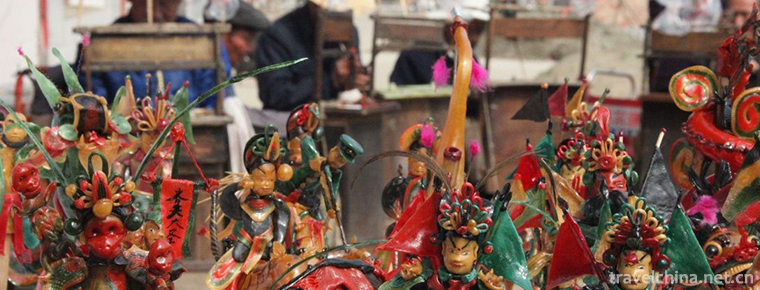
-
Buyi Chabai Song Festival
The Buyi Chabaige Festival is a commemorative festival of the Buyi people in Xingyi, southwest Guizhou Province. It is held in Chabaichang, Dingxiao Town, Xingyi City.
Views: 152 Time 2019-04-04 -
Korean Agricultural Music and Dance
"Agricultural Music and Dance" is commonly known as "Agricultural Music", which is spread in the Korean community of Jilin Province, Heilongjiang Province, Liaoning Province .
Views: 146 Time 2019-04-16 -
Lantern Opera
Flower lantern opera is a kind of traditional opera widely popular in China. Its prominent feature is that the hands are inseparable from fans and handkerchiefs, singing and dancing.
Views: 288 Time 2019-05-04 -
Huatuo Wuqin Opera
Huatuo Wuqin Opera is a set of guiding techniques compiled by Huatuo, a famous physician in the late Eastern Han Dynasty, according to the principles of traditional Chinese medicine,.
Views: 94 Time 2019-05-04 -
Torch Festival
Torch Festival is an ancient traditional festival of the Yi, Bai, Naxi, Jinuo and Lahu nationalities. It has profound folk cultural connotations and is known as the "carnival of the East"..
Views: 264 Time 2019-05-05 -
Wooden Fish Songs
Muyu song is short for Muyu, also known as Touyu song. It is one of the traditional rap and singing arts in Guangdong Province and belongs to the system of Tanci. It is popular in the Pearl River Delt.
Views: 151 Time 2019-06-06 -
Nadam
Nadamu is Mongolian, also known as Nair. Nadamu is a Mongolian transliteration, meaning "entertainment, games" to express the joy of harvest. The Nadamu Congress is a traditional festival wi.
Views: 72 Time 2019-06-06 -
Manufacturing Skills of Inside Lined 1000 Layer Cloth Shoes
Inline Shoe Shoe Shoe Shoe Shoe Shoe Shop was founded in 1853 in Xianfeng, Qing Dynasty. At first, it was specially designed for the royal family and officials at all levels t.
Views: 301 Time 2019-06-07 -
Shaoxing Xuanjuan
Shaoxing Xuanjuan is a traditional rap art with religious color, which is mainly used to worship gods and pray for blessings. Since Tang Dynasty, it has developed into folk art in Qing Dynasty. The So.
Views: 183 Time 2019-06-14 -
Xibo embroidery
Xibo embroidery has a long history and rich connotation. Xibo women are skillful and skillful in capturing the beautiful scenery in life. During more than 200 years of living in the western part of th.
Views: 378 Time 2019-07-01 -
Song pool of the Zhuang nationality
Song pool of the Zhuang nationality is a form of Festival gathering and singing activities held by the masses of the Zhuang nationality at a specific time and place..
Views: 298 Time 2019-08-16 -
Meishan City logo
Meishan City logo is composed of ancient Chinese tile pattern and Dongpo head portrait, which shows a feeling of ancient historical traces and reflects the ancient culture of Meishan. From the design to the font are used a simple style, using the combinatio.
Views: 321 Time 2020-12-18
